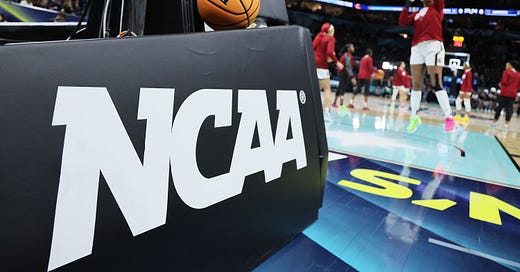College Athletes Are Getting Paid, But the Cost of Change Could Reshape American Sport Forever
With a $2.8 billion settlement approved, the amateur era of college athletics is officially over. Now comes the scramble to build a fair, sustainable future in its wake.
In the United States, the illusion of amateurism in college sports died long before the courts buried it. What happened when Judge Claudia Wilken approved a $2.8 billion settlement allowing universities to directly pay athletes is simply the moment the system finally admitted it had been running on professional energy all along.
The decision caps nearly five years of legal battles initiated by Arizona State swimmer Grant House, whose name now joins that of Ed O’Bannon in the mythology of college sports disruption. It opens the door for revenue sharing of up to $20.5 million per school annually and unlocks a $2.7 billion payout to former athletes who played under rules that denied them a share of the billions they helped generate. For the NCAA, this isn’t just a loss, it’s a surrender.
To understand the scale of this shift, it helps to remember how tightly the NCAA clung to its amateur code. In 2014, Wilken herself ruled in favour of O’Bannon, carving the first crack in the system by allowing athletes to profit from their own image. That was seen as radical. Fast forward to 2025, and the idea of not paying players sounds outdated—if not outright predatory.
NIL deals, first legalised in 2021, were the prelude. They let athletes sign brand partnerships but left schools’ vast media and broadcast revenues untouched. This settlement changes that. It formally recognises what fans, boosters, and recruiters have known for years: the talent is the product. And products get paid.
Michigan quarterback Bryce Underwood’s reported NIL valuation, between $10.5 and $12 million, is a sign of what’s to come. Star athletes, particularly in football and basketball, are already commanding serious commercial deals. Now schools must match that with direct payments, or risk losing them in the recruitment arms race. What used to be hush-hush payments from boosters under the table have become boardroom budget lines.
Follow me for more sports and life updates: Instagram
The big winners are clear: quarterbacks, one-and-done basketball stars, and every blue-chip recruit walking into an SEC or Big Ten locker room this summer. But as with any massive redistribution of money, the winners are few, and the losers are many.
Walk-ons, the unpaid backbone of many collegiate programmes, are already feeling the squeeze. With the NCAA introducing new roster limits, some of those spots have vanished entirely. Though Wilken’s final ruling provided a mechanism for “Designated Student-Athletes” to rejoin teams without penalty, the writing is on the wall. In this new world, sentimental stories of late-blooming walk-ons may be replaced by spreadsheets, contracts, and cost-benefit analysis.
And then there’s the quiet funeral for Olympic sports.
Track and field, gymnastics, and swimming, disciplines that fill America’s medal count every four years but rarely draw television viewers, are in jeopardy. If schools are now budgeting for millions in athlete payments, some administrators will start asking hard questions about where the money’s coming from. In the zero-sum game of university athletics, football and basketball will eat first. Everything else risks being rationed or cut entirely.
This isn’t just a financial restructuring. It’s a cultural one. The ideal of the student-athlete, bright-eyed, scholarship-funded, balancing studies with sport, is fading. What emerges is something more transactional. These are athletes first. Students second. And employers, sorry, schools, will need to start behaving accordingly.
Yet, not everything about this feels cynical. For decades, young athletes were told their education was payment enough, while their likenesses were used to sell video games, fill stadiums, and anchor billion-dollar broadcast deals. This settlement rights a historic imbalance. It may be clumsy. It may hurt some parts of the system. But it’s morally overdue.
There are regulatory headaches ahead. The NCAA is ceding more control to the four biggest conferences, the SEC, Big Ten, ACC, and Big 12, which will now set many of the terms, especially in football. Governance will become more decentralised. Uniformity will be a fantasy unless federal legislation steps in, which NCAA President Charlie Baker has pushed for, citing the need for antitrust protection.
In the meantime, enforcement of this new model falls to a newly created body, reportedly led by Deloitte auditors. This isn’t about culture anymore, it’s about compliance.
There are still unaddressed fault lines. State laws on NIL vary wildly. Legal challenges are likely to continue. And while this deal offers financial clarity, it doesn't resolve the existential question facing college athletics: What is the purpose of this system? Is it to educate? To entertain? To make money? Or to serve as a minor league funnel to the pros?
The answer, for now, is all of the above, and that ambiguity could be its downfall.
Still, something undeniable has shifted. For the first time, a generation of college athletes won’t be told their dreams must come with a side order of poverty. They’ll sign letters of intent with something closer to dignity. And whether you're a coach, a fan, or a university CFO, you’ll need to adjust.
Because college sports are no longer pretending to be something they’re not. The money’s on the table. And the game has changed.
Thanks for reading, David Skilling.
Follow me on LinkedIn | X | Instagram
If you hit the like button, you’ll be doing me a huge favour, and if your business needs sports writing, wants to discuss advertising, or you have PR stories to pitch, feel free to get in contact.
If you know someone who will enjoy this article, please share it with them.




